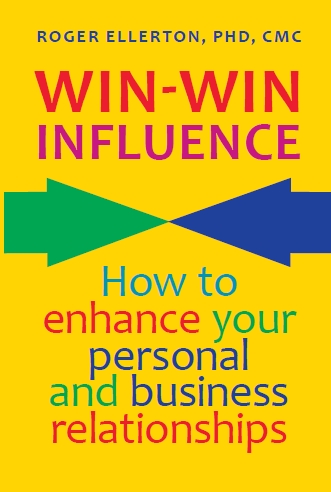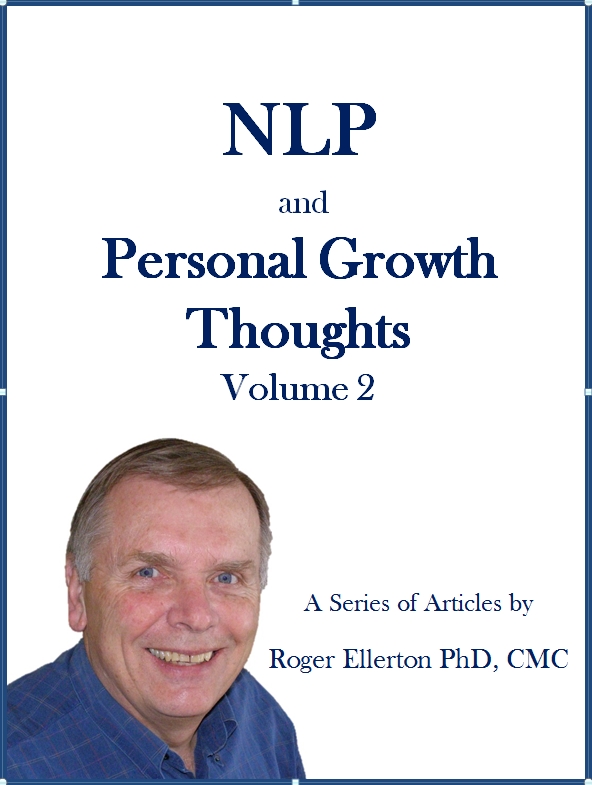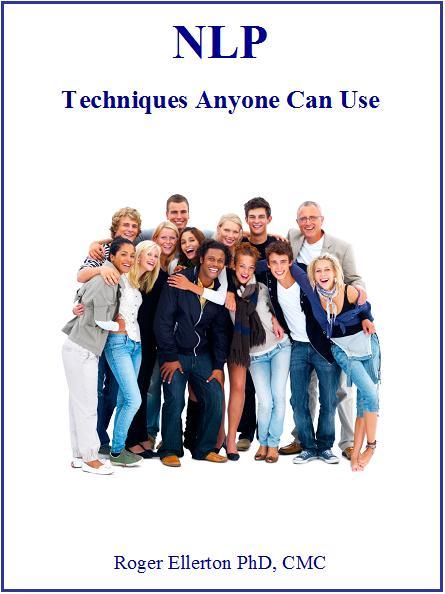Be More Successful, Promote Benefits
By Roger Ellerton Phd, ISP, CMC, Renewal Technologies Inc.
This article may not be republished without written permission from Roger Ellerton/Renewal Technologies Inc. If you republish this article without permission, you will be in violation of copyright law and sent an invoice. You may share this and other pages with your friends by linking directly to this page from your website or blog.
Far too often when we promote our products, services or ideas, we focus on the features hoping the other person will see something of value in what we offer. Sometimes we are successful using this approach. But not as successful as we could be if we were to describe the advantages or even better the benefits associated with our offering. When you learn the differences between a feature, advantage and benefit, you will be able to present your offering in a manner that is much more appealing.
Many people are too close or too involved with their offering and hence have difficulty distinguishing between features, advantages and benefits. As well, those who attempt to explain the differences between features, advantages and benefits often use examples that are very familiar to the reader or listener. Because of this familiarity, the reader/listener may have already (unconsciously) associated advantages or benefits with the proposed features and thus not be able to fully see the value in promoting benefits rather than features. For this article, allow me to use an example that you may not be familiar with.
NLP: As part of my business activities, I write books and deliver trainings that are based on NLP (neuro-linguistic programming). In a general gathering of adults, I estimate that less than 1% of those in attendance have heard of NLP. Unless you found this article by searching on the term "NLP", I suspect you fall into the 99%. Hence, bringing this term to your attention most likely doesn't generate a great deal of interest for what I do. Yet, well intentioned people will often throw out a term/topic like this hoping it will attract your attention - simply because it means a great deal to them.
Features
A feature is an impartial characteristic or attribute of a product, service or idea. It is an essential piece or detail of your offering. No matter who is considering your offering, the features don't change. You may say that features have value. Yes, and that is more in the realm of advantages or benefits that the features deliver.
Features may include material (flexible rubber case), operational details (over 50M instructions per second), size (fits in your hand), cost (less than $20), location (Cuba) or factors that support or improve your offering's ability to function.
Yes, it is useful to specify features as they help to differentiate your offering from other products, services or ideas. Realize that in some situations, people may not understand or appreciate the value of the features (e.g. laptop memory: 4GB Dual Channel DDR3L-RS 1600Mhz) and not devote a great deal of attention to them. No matter how impressive the features are to you, features do not sell your offering unless the other person has already associated a perceived value (advantage or benefit) to one or more features.
Turning to our main example, some features of NLP are:
- A model for inter and intra-personal communication.
- Techniques for establishing rapport.
- Processes to address limiting beliefs.
- Toolkit for change.
- Techniques/processes for coaches, parents, managers, etc.
- Tips and techniques for meetings, negotiations and presentations.
- A five step process for success.
Depending on your specific interests and needs, you may have figured out where and how these features can be useful and perhaps would like to find out more about NLP. And I suspect that most of you simply see a list of features and say to yourself, "Interesting, but so what!"
Advantages
An advantage is the immediate result of a feature. It provides some real-world meaning (the purpose or intent). Advantages are central to explaining the importance of your offering, as they add something tangible to the features. They can be relevant to someone learning about a product, service or idea for the first time or considering an upgrade. Although they make your offering more interesting or appealing, they often don't make the sale - unless your potential client has already linked the advantage to a perceived benefit in their mind.
Just as your offering may have one or more features, a feature may have one or many advantages.
Advantages are determined by exploring the performance, purpose or end-result of a feature. Questions to explore are: What does this feature allow me or someone else to do or avoid? What are the consequences if this feature was excluded or not activated?
Possible advantages (from previous examples) are: material (flexible rubber case - doesn't break when dropped), operational details (over 50M instructions per second - faster processing), size (fits in your hand - easy to carry), cost (less than $20 - low cost), location (Cuba - warm weather, lovely beaches).
Returning to our main example on NLP, let's explore some of the advantages associated with the features. There are many different advantages that I could list for each of the features. For ease of reading, I have only listed one advantage for each feature.
- A model for inter and intra-personal communication - Learn how to improve your communication skills.
- Techniques for establishing rapport - Be able to establish a sense of trust and safety with those with whom you communicate.
- Processes to address limiting beliefs - Move beyond what stops you.
- Toolkit for change - Help yourself or others to change unwanted behaviors.
- Techniques/processes for coaches, parents, managers, etc. - Improve how you interact with your clients, children or coworkers.
- Tips and techniques for meetings, negotiations and presentations - Conduct useful, effective and efficient meetings.
- A five step process for success - Move beyond hit and miss and follow a proven process.
Now that we have advantages, in addition to features, perhaps you are beginning to see some value in studying NLP.
Benefits
Benefits are the most important part of successfully promoting your offering. They transform your offering from a simple and objective "thing" or idea to a solution that meets the other person's needs, e.g. improve an experience or solve a perceived problem. Presenting your offering in terms of benefits creates an emotional experience for the other person and that is what motivates them to buy your product, service or idea.
Possible benefits (from previous examples) are: material (flexible rubber case - doesn't break when dropped - reduced maintenance costs), operational details (over 50M instructions per second - faster processing - saves you time), size (fits in your hand - easy to carry - enjoy your music wherever you are), cost (less than $20 - low cost - best value for your money), location (Cuba - warm weather, lovely beaches - super family vacation).
Buyers don't seek out a product or service; they seek out a solution to their perceived needs or problems.
Far too often, we think it's the product or service that people want to buy. In reality, however, people buy the benefit the product or service provides. Consider the following situation: you walk into a hardware store to buy a drill bit. Unless you are a collector of drill bits, it's not the drill bit you really want. You want to buy a certain size hole - that is, what the drill bit will allow you to do (a benefit). And you can even argue, it's not the hole but what the hole allows you to do. Excerpt from Win-Win Influence: How to Enhance Your Personal and Business Relationships.
Benefits are subjective and person or group specific. That is, what I see as an important benefit may not resonate with you at all. Before presenting benefits, you need to do an assessment of what is important to the other person or group. You cannot determine a benefit by focusing on your offering. You must first see things from the other person's point-of-view and experiences - what are their needs? Then look at your offering and notice how it satisfies these needs. Only then do you have one or more benefits that you can present. This approach takes time and practice, but through it you can master the art and science of prospect conversion. Win-Win Influence: How to Enhance Your Personal and Business Relationships, presents a detailed process for determining the other person's or group's needs and values.
Now let's see if we can list some benefits that would encourage more people to explore NLP. These benefits are based on my knowledge of why people study NLP.
- A model for inter and intra-personal communication - Learn how to improve your communication skills - Engage people in a positive, stimulating and resourceful manner.
- Techniques for establishing rapport - Be able to establish a sense of trust and safety with those with whom you communicate - Increased acceptance of your ideas by coworkers and family.
- Processes to address limiting beliefs - Move beyond what stops you - Achieve what you desire.
- Toolkit for change - Help yourself or others to change unwanted behaviors - More satisfied clients or better family environment.
- Techniques/processes for coaches, parents, managers, etc. - Improve how you interact with your clients, children or coworkers - Be a more successful coach, parent or manager.
- Tips and techniques for meetings, negotiations and presentations - Conduct useful, effective and efficient meetings - More positive results and better use of your time.
- A five step process for success - Move beyond hit and miss - Achieve your goals.
When presenting, your product, service or idea to another person, in addition to listing the benefits, there is some advantage to mentioning the features and advantages as this may well be the level of thought the other person is at. (That is, consciously or unconsciously they have assessed their needs and determined that advantage x or feature y will best meet these needs. Recently, I saw an A&W advertisement promoting a feature - beef with no added hormones or steroids - because many people have associated a healthier lifestyle with this feature.) And in the majority of cases, it is the benefits that will convince the other person to buy or at least explore what you have to offer.
Author: Roger Ellerton is a certified NLP trainer, certified management consultant and the founder and managing partner of Renewal Technologies. The above article is based on his book Win-Win Influence: How to Enhance Your Personal and Business Relationships .
Copyright © 2013 Renewal Technologies Inc. All rights reserved.








